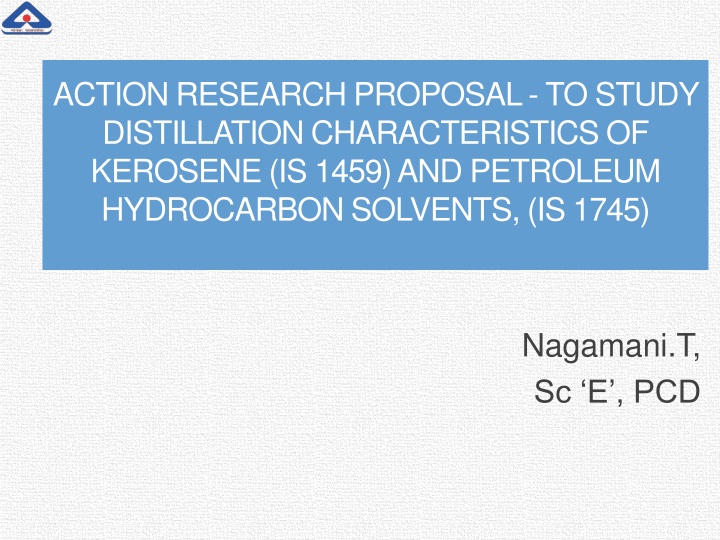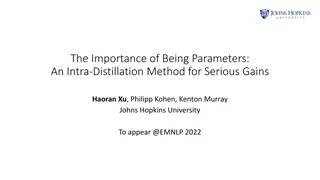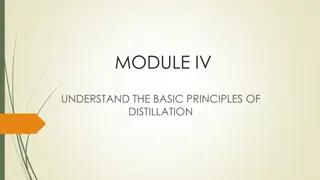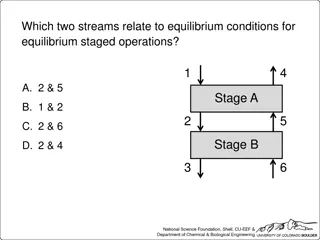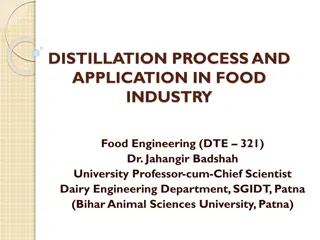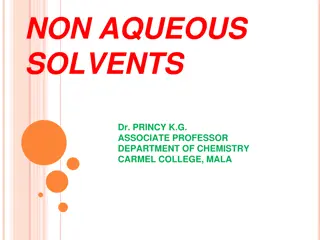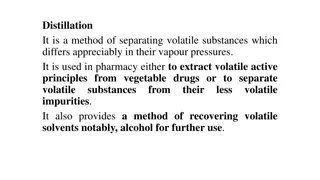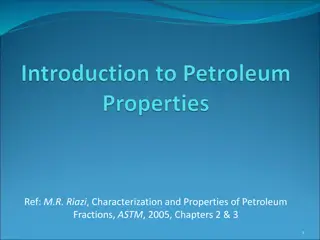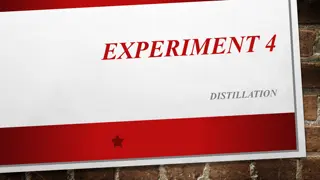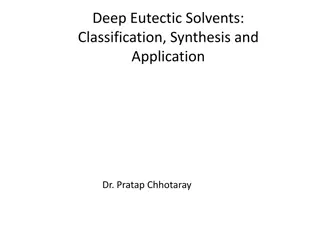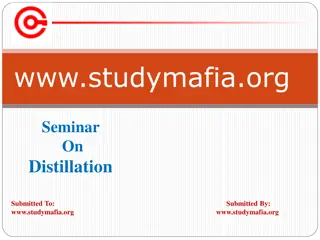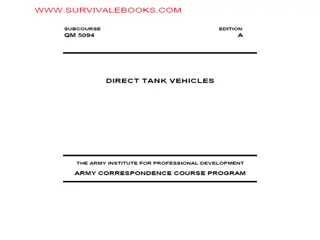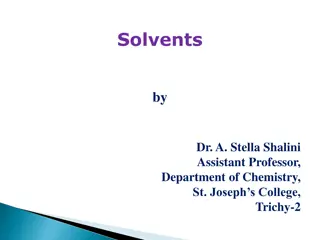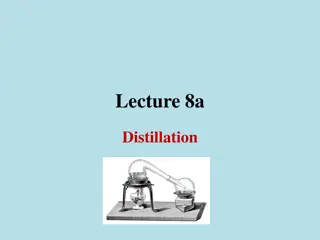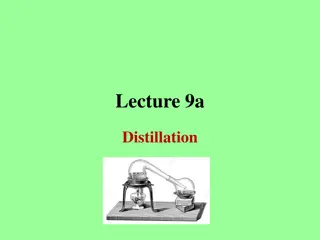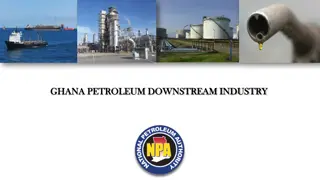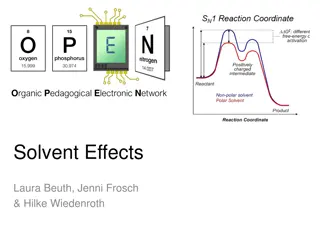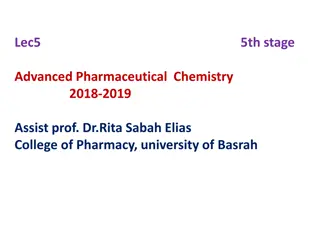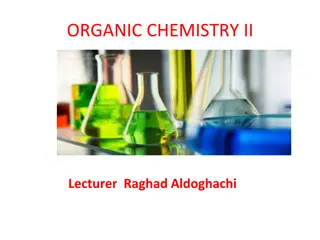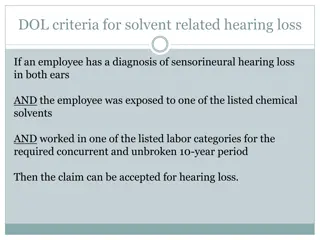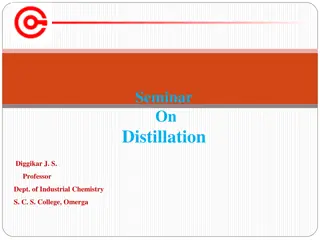Study of Distillation Characteristics of Kerosene and Petroleum Solvents
This research proposal aims to investigate the distillation characteristics of Kerosene (IS 1459) and Petroleum Hydrocarbon Solvents (IS 1745) to differentiate between them. With overlapping boiling points, it is crucial to determine the 50% and 95% volume recovery temperatures in both standards to distinguish between the two. The study will focus on parameters such as final boiling point, acidity, burning quality, and more to provide clarity for importers and customs authorities.
Download Presentation

Please find below an Image/Link to download the presentation.
The content on the website is provided AS IS for your information and personal use only. It may not be sold, licensed, or shared on other websites without obtaining consent from the author.If you encounter any issues during the download, it is possible that the publisher has removed the file from their server.
You are allowed to download the files provided on this website for personal or commercial use, subject to the condition that they are used lawfully. All files are the property of their respective owners.
The content on the website is provided AS IS for your information and personal use only. It may not be sold, licensed, or shared on other websites without obtaining consent from the author.
E N D
Presentation Transcript
ACTION RESEARCH PROPOSAL -TO STUDY DISTILLATION CHARACTERISTICS OF KEROSENE (IS 1459) AND PETROLEUM HYDROCARBON SOLVENTS, (IS 1745) Nagamani.T, Sc E , PCD
Objective In Specification (third revision), Final boiling point of solvent grade 120/240 is specified as 245 C, maximum and is overlapping with that of Kerosene Specification (fourth revision)], which is 300 C, maximum. By studying distillation characteristics and finding out the values of 50% and 95% volume recovery temperatures in both standards, differentiating solvent from kerosene will become easy. IS 1745:2018 Petroleum hydrocarbon solvents- Kerosene [IS 1459:2018
Background. Regular queries from importers stating Overlapping of hydrocarbon solvent kerosene Their product being kerosene as the parameters of solvent is qualifying with that Customs authorities. final boiling (120/240), point of with considered as of kerosene, by
Background. IS 1745:2018 Petroleum hydrocarbon solvents- Specification (third revision) IS 1459:2018 Kerosene Specification (fourth revision) Prescribes the requirements and the methods of test for Petroleum Hydrocarbon Solvents generally used in solvent extraction of oils, rubber and paint industries, in the formulation of insecticides, for dry cleaning and for textile printing purposes Prescribes requirements and methods of sampling and test of Kerosene intended for use as an illuminant and as a fuel
Background. IS 1745:2018 Petroleum hydrocarbon solvents- Specification (third revision) IS 1459:2018 Kerosene Specification (fourth revision) Requirements in specific to kerosene . a) Acidity, inorganic; b) Burning quality; and c) Smoke point. Requirements in specific to 120/240 solvent . a) Initial boiling point; b) Aromatic content; andc) Residue on evaporation.
Overlapping parameters.. Requirement IS 1459 Kerosene 35 To be reported To be reported IS 1745 Petroleum hydrocarbon solvents 30 Flash point, C Density Distillation 50% & 95% recovery by volume, C Percent recovered below 200 C, percent (v/v), Min Final Boiling point, C ------ To be reported 20 ---- 300 240
Methodology To compare the test results of the kerosene and solvent 125/240, produced by oil companies during 2019-2020, month-wise To test around 6 samples, with the help of Committee members, with atleast 2 samples in each laboratory The data obtained would be analyzed for carrying out necessary modifications / revision of both specifications
Constraints encountered.. All oil companies took sometime and have provided data only after repeated reminders Inspite repeated reminders, Nayara energy and RIL (private oil companies) have not provided data They were requested once again during the PCD3 meeting held on 27 October 2020 and they agreed to provide by 2 November 2020
Progress of work done.. Data provided by IOCL, BPCL and HPCL, for both solvent and kerosene MRPL provided data only for kerosene Action Research Project\Kerosene data analysis.xlsx Action Research Project\Solvent data and Final graph.xlsx
Action Plan for completing the project IOCL, BPCL and HPCL representatives agreed to provide samples as well to allow to carry out/ witness testing of distillation and density parameters in their IOCL, Panipat Refinery, BPCL, Bijwasan and HPCL, Badarpura laboratories To coordinate with IOCL and get the samples tested in the 3 labs, by visiting the facilities, by the end of November 2020 Data correlation, report writing will be completed by the 15 December 2020 Recommendations for amending the requirements, if any, to be discussed in the Subcommittee meetings planned in the end of December 2020.
